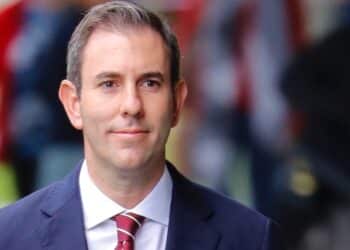On the back of continued questioning across multiple avenues in the Senate – including estimates, the committee hearings on the first Delivering Better Financial Outcomes bill, and the inquiry that eventually led to a recommendation that the regulator be split in two – Bragg has put a number of tough questions to the Australian Securities and Investments Commission (ASIC) focused on its part in the Dixon Advisory debacle.
The written questions, which the senator has directed to ASIC as part of budget estimates, are largely focused on seeking greater transparency about the regulator’s actions relating to the collapse and its investigations.
“The 19 April 2022 ASIC media release on suspending the AFS license of Dixon Advisory included a statement that ‘ASIC is also undertaking inquiries in relation to the transition of former clients of Dixon Advisory to Evans & Partners Pty Ltd, a related entity’. What did your investigations reveal?” Bragg asked.
“How many of these Dixon Advisory clients moved to other subsidiaries within E&P Financial Group and how many of these clients who moved have submitted complaints to AFCA, which will need to be paid for by the CSLR? Additionally, how many financial advisers transferred from Dixon Advisory to Evans & Partners?”
Speaking with ifa in May, FAAA chief executive Sarah Abood raised a similar issue, highlighting the role of Dixon parent company Evans and Partners (E&P).
“When this compensation is paid, much of it will go to E&P as they still have many of these clients on the books,” Abood said.
“It’s certainly what makes me the angriest, that advisers are on the hook for the failings of a listed entity. It’s unbelievable.”
Bragg also queried what action ASIC took given the sentiment among financial advisers is that the problems with Dixon Advisory “have been known for many years and had been reported to ASIC”.
“Can you please advise what reports ASIC had received, when and what action ASIC took in response to those reports? What was the trigger for ASIC to ultimately take action against Dixon Advisory?” he asked.
Along with questioning why the requirement for Dixon’s membership of the Australian Financial Complaints Authority (AFCA) client obligation scheme was extended a year, Bragg also asked why ASIC decided not to take any action against the financial advisers involved with Dixon.
“At the Senate estimates hearing on 4 June 2024, ASIC confirmed that you were investigating Dixon Advisory between 2015 and 2019, however, ultimately decided not to take any action against the financial advisers. With respect to this investigation:
- Why did it take so long, if the client loss was so great?
- What did you discover with respect to the sales practices and the related party URF fund, where the client losses were so great?
- What processes did the licensee take to research the URF fund before it was recommended to clients and how did they monitor its performance?
- Did you interview financial advisers to understand why they recommended such high allocations to related party products?
- To what extent were senior managers involved in both the advice and product manufacturing side of the business and how were conflicts of interest managed?
- Presumably, if you decided not to take action against individual advisers, then you must have decided that the core of the problem was the underlying business model. If this was the case, then why wasn’t action taken against management and directors who designed and operated that business model?”
Bragg also raised an issue around the concentration of client funds in related party products, echoing concerns that FAAA general manager policy, advocacy and standards, Phil Anderson, had expressed to ifa around the level of exposure clients had to the US Masters Residential Property Fund (URF).
“Our main objection here is, one, just being able to walk away, but it’s what they have walked away from,” Anderson told ifa.
“This is predominantly related to this URF fund which is a related party of Dixon Advisory. There’s a preliminary AFCA case that [has] been released on a Dixon Advisory client, which suggests that this client had between 54 per cent and 75 per cent of their investments in related party products. They also had a significant overexposure to property, and that’s all tied up in this URF.
“This is not about advice that relates to unrelated party products. If it was advice that was related to external products, and something went horribly wrong, then you might question why was the parent company allowed to walk away from it?”
In his questions on notice, Bragg asked ASIC if this was a “surprisingly high allocation in ASIC’s view”.
“Would such a high percentage of related party products normally be an alarm bell for ASIC? What monitoring does ASIC do to oversight this issue of high related party investment allocation for vertically integrated groups in the financial services sector?” he asked.
“Would ASIC normally investigate such situations to understand what incentives are being paid or pressure is being applied to the advisers to facilitate such a high allocation to related party investment products?”
Finally, Bragg turned towards the URF and the level of investment in the fund that came from Dixon.
“As part of ASIC’s investigation of the Dixon Advisory scandal, did you manage to work out what percentage of the total investment in the US Masters Residential Property Fund came from clients of Dixon Advisory? Evidently it was a very high percentage. To what extent was this a concern for ASIC? Did this suggest a strong level of pressure had been applied from elsewhere in the company to support this product?”
In a letter to Financial Services Minister Stephen Jones earlier this week, Association of Independently Owned Financial Professionals (AIOFP) executive director Peter Johnston said the AIOFP has referred its concerns around the role “Treasury bureaucrats” have played in the construction of the Compensation Scheme of Last Resort (CSLR) to the National Anti-Corruption Commission (NACC) for investigation.
“Further to our correspondence with your office on June 30th we have some additional information that raises further questions and confusion about the relationship between the CSLR, the Dixon Advisory failure and the Treasury bureaucrats who we assume structured the legislation and its outcomes,” Johnston said in the letter.
“This issue has enraged and galvanised the advice community like no other in living memory, it will substantially increase the cost of advice for consumers when the government’s objective should be to lower costs.”




Bragg may also wish to hammer Labor about whether Jones or other members of their Govt had knowledge of the cosy relationship between Cbus property developments and the appointment of contractors via the CMFEU?
I reckon there has been so much backscratching over the years they are all bleeding under their shirts.
ASIC are the new CFMEU.
The bureaucrats who gamed AFCA and the CSLR are the same highly paid bureaucrats that were greedy and silly enough to place more than 75% percent of their savings into a single investment.
“Shoosh, don’t tell anyone, but if the investment works out let’s take 100% of the profits, but if it doesn’t, don’t worry we’ll socialise 100% of the losses!
Cardigan wearers!
Bragg has been doing an absolutely awesome job. I encourage him to keep up the great work.
I was also interested to see other Senators asking some valid questions of APRA regarding how much rigour they have put into their investigations.
In a draft report prepared as part of a due diligence process before the 2016 merger between the two wealth managers (Dixons & Evans & Partners), KPMG called out “Dixon’s reliance on URF,” the $1.16 billion US Masters Residential Property Fund. Shareholders of Evans & Partners were told by accounting firm KPMG that a merger with Dixon Advisory could result in reputation risks as any public float would reveal Dixon’s reliance on fees generated from a controversial property fund and draw attention to its business model of selling its own products to clients.
Yet ASIC didn’t scrutinise them, all the way back in 2016.
Based on the recent AFCA determination, it was incorrect asset allocations and related entity (conflicted) product recommendations were the issues.
If ASIC looked at a couple SoAs back in 2016 or prior it should have been a rather basic exercise to see what was going on. ASIC are incompetent and we are paying for it!
These are fantastic questions posed by Senator Bragg to the keystone cops @ ASIC.
It restores my faith that they will be held accountable and their “nothing to see here move right along” incompetence will no longer be tolerated.
It is only a matter of time until they are disbanded and competent people under a new regime replace them as they have been absolute jokes as a regulator for far too many years now and this is such an important role which deserves to be run fairly and with respect for all parties.
Sounds like FP’s should consider pulling together to fund taking this matter to court…the cost of a court case is likely to be much cheaper than the cost of the CSLR with Dixon complaints in it
Great idea premium funders and lawyers are ready for a class action!
Corrupt and useless ASIC
Conflicted Treasury employees as clients of Dixon’s
Ex Dixon’s investment committee and head of advice now working for Treasury.
The conflicted corrupted stench of this fiasco must continue to bought to light.
Can it get any more dodgy ?
Let’s keep pressuring and digging and find out the depth of crap.
One feels it’s going to get far worse than any can believe.
Keep pushing Andrew against the secret and silent society of both ASIC and Treasury.
This is a manipulated, discriminatory and conflicted cover up and it is incomprehensible that Dixon’s have been given this type of preferential treatment and the penalties have been transferred to completely innocent parties.
If you don’t push hard against this machine, they will continue to design outcomes that suit ideology and an inherent pervasive hatred of Independent Financial Advisers by the regulator and Treasury that has existed for years.
God bless you Senator Bragg our lone voice in Canberra!